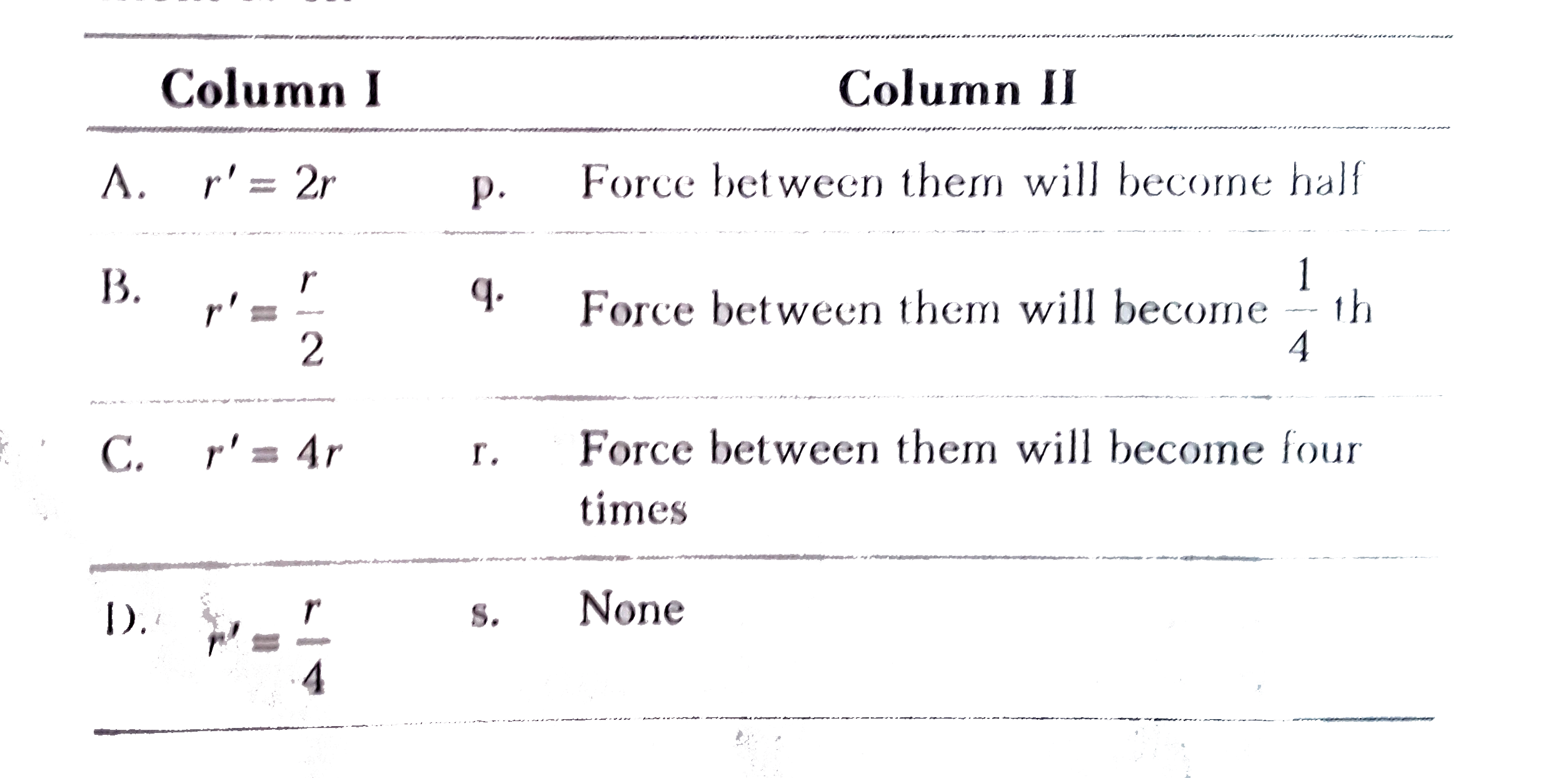Two charges q1 and q2 are placed in vacuum at a distance d and the force acting between them is F . If a medium of dielectric constant 4 is introduced around them, the force now will be
4F
2F
F2
F4
The correct Answer is:D
To solve the problem, we need to understand how the introduction of a dielectric medium affects the electrostatic force between two charges. Here’s a step-by-step solution:
Step 1: Understand the initial force between the charges
The force F between two charges q1 and q2 placed at a distance d in a vacuum is given by Coulomb's law:
F=k⋅q1⋅q2d2
where k is the electrostatic constant in vacuum, which can be expressed as:
k=14πϵ0
Thus, we can rewrite the force as:
F=14πϵ0⋅q1⋅q2d2
Step 2: Introduce the dielectric medium
When a dielectric medium with a dielectric constant ϵr=4 is introduced, the new electrostatic constant k′ becomes:
k′=14πϵ0⋅ϵr=14πϵ0⋅4=116πϵ0
Step 3: Calculate the new force
The new force F′ between the charges in the dielectric medium is given by:
F′=k′⋅q1⋅q2d2
Substituting for k′:
F′=116πϵ0⋅q1⋅q2d2
Step 4: Relate the new force to the original force
Now, we can express the new force F′ in terms of the original force F:
F′=14⋅14πϵ0⋅q1⋅q2d2=F4
Conclusion
Thus, the force acting between the charges when the dielectric medium is introduced is:
F′=F4
The force F between two charges q1 and q2 placed at a distance d in a vacuum is given by Coulomb's law:
F=k⋅q1⋅q2d2
where k is the electrostatic constant in vacuum, which can be expressed as:
k=14πϵ0
Thus, we can rewrite the force as:
F=14πϵ0⋅q1⋅q2d2
When a dielectric medium with a dielectric constant ϵr=4 is introduced, the new electrostatic constant k′ becomes:
k′=14πϵ0⋅ϵr=14πϵ0⋅4=116πϵ0
The new force F′ between the charges in the dielectric medium is given by:
F′=k′⋅q1⋅q2d2
Substituting for k′:
F′=116πϵ0⋅q1⋅q2d2
Now, we can express the new force F′ in terms of the original force F:
F′=14⋅14πϵ0⋅q1⋅q2d2=F4
Thus, the force acting between the charges when the dielectric medium is introduced is:
F′=F4
Topper's Solved these Questions
Similar Questions
Knowledge Check
Two similar point charges q1andq2 are placed at a distance r apart in the air. The force between them is F1 . A dielectric slab of thickness t(<r) and dielectric constant K is placed between the charges . Then the force between the same charge . Then the fore between the same charges is F2 . The ratio is
A1BKC[r−t+t√Kr]2D[rr−t+t√K]2Two charges are at distance (d) apart in air Coulomb force between them is F. If a dielectric material of dielectric constant (K) is placed between them, the coulomb force now becomes.
AF/KBFKCF/K2DK2FTwo charges are placed at a distance apart if a glas slab is placed between them force between them will
Abe zeroBincreaseCdecreaseDremains the same
Two point charges are placed at separation d in vacuum and the force between them is F. Now a dielectric slab of thickness t=d/3 and dielectric constant K is placed between the charges and the force becomes 9F/25. Find the value of K.
View SolutionTwo points charges Q1 and Q2 placed at separation d in vacuum and force acting between them is F. Now a dielectric slab of thickness d/2 and dielectric constant K=4 is placed between them. The new force between the charges will be
View SolutionTwo charges are placed at a distance apart. It a glass slab is placed between them, force between them will
View SolutionTwo point charges A and B, having charges +Q and -Q respectively, are placed at certain distance apart and force acting between them is F, if 25% charge of A is transferred to B, then force between the charges becomes:
View SolutionTwo point charges A and B, having charges +Q and -Q respectively, are placed at certain distance apart and force acting between them is F, if 25% charge of A is transferred to B, then force between the charges becomes:
View Solution



